What are the differences between Korean food vs Japanese food? Also, if you want to distinguish 2 famous Asian cuisines, this post will be your instructor. By reading it, you can learn more about them and explore some differences and similarities.
Many people also believe that Sushi originated in Korea. Have you ever been confused like this? To avoid unnecessary mistakes, you should take the time to read this helpful article from the beginning to the end.
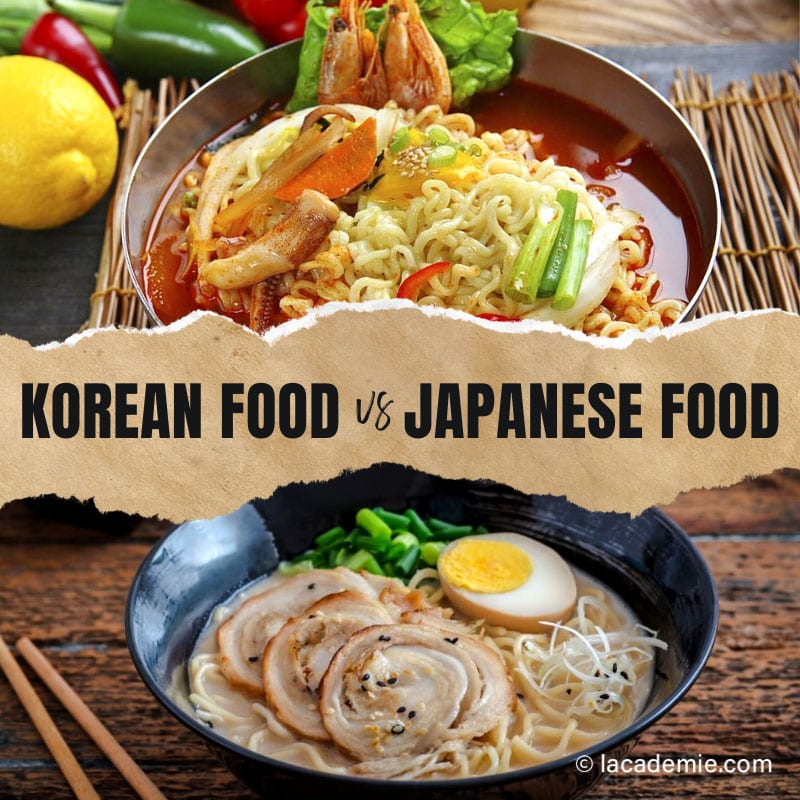
A Short Brief About The Korean And Japanese Cuisine
Japan and Korea are 2 extensive and long-standing cuisines of Asia and the world. Hence, you and I will find helpful information about the cuisine of 2 beautiful countries to get the most accurate comparisons.
Some Remarkable Things About Korean Cuisine
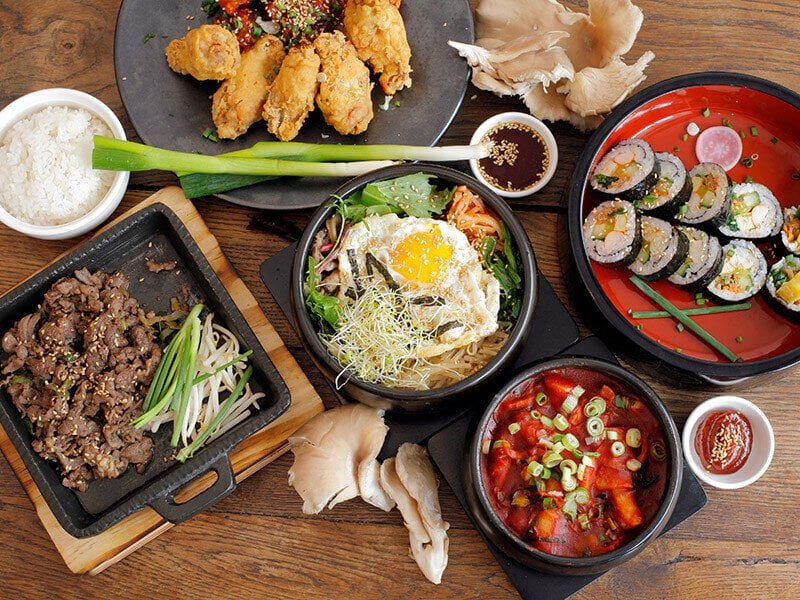
Korean cuisine has existed and developed over the centuries. It is attached and witnessed many fluctuations and changes in the country’s politics and society. Korean cuisine was a result of ancient nomadic and agricultural traditions in Korea.
Common Ingredients In Korean Foods
Korea’s staple and irreplaceable food is rice, veggies, meats, and seafood. In addition, dairy products also play an essential role in Korean meals. Even better, Kimchi is a symbolic dish and always appears in all meals.
When you visit Korean families, you can easily see jars of pickles. Koreans often mix sour and spicy dishes with grilled meat to balance the grease flavor. Of course, it is a pity to ignore rice rolls, Kimchi, or Naengmyeon when coming to Korea.
The separate 4-season climate leads to a variety of recipes and flavors. Many fresh and yummy foods are popular in the summer, spring, and autumn, but Koreans will be hard for Koreans to find these foods in the cold winter.
Hence, they have fermented fish or made dried Kimchi and veggies for this season.
Characteristic Flavor Of Korean Foods
Regarding eating habits, Koreans have a great passion for noodles and soju. They often gather to drink soju (the most popular drink in Korea) with friends and consume warm hotpot BBQ dishes. Also, street food is pretty standard in Korea.
Many excellent Korean dishes often have a strong flavor, thanks to the diversification in spices and additional ingredients. Soy sauce, ginger, garlic, pepper flakes, and fermented red chili paste (Gochujang) are the components you can see in food regularly.
Korean cuisine is pretty famous for hot and bright red dishes. This color comes from the habit of using chili powder and chili paste. In addition, this brings a robust spicy taste to the dishes.
Expand your knowledge with all the information about Korean cuisine.
Blow Your Mind With Knowledge About Japanese Cuisine
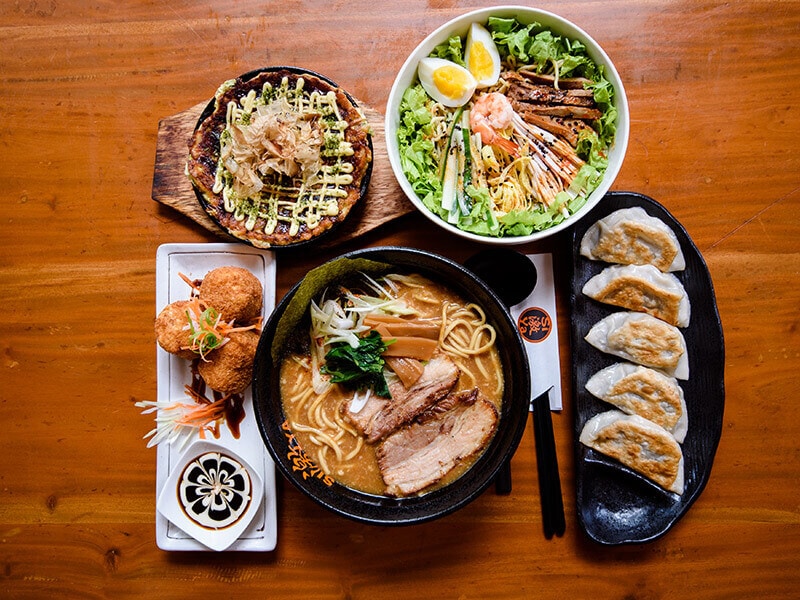
Like Korea, Japanese cuisine also exists for a long time through many ups and downs in the economy, politics, and society. Japanese cuisine gets its inspiration from Chinese cuisine. However, Western cuisine also substantially impacts Japanese food in modern times.
Let’s Talk About Traditional Japanese Foods
Overall, rice and Miso soup are traditional and familiar dishes when it comes to Japanese cuisine. The Japanese often eat pickled veggies, fish, or veggies cooked in broth as side dishes. Even better, seafood is indispensable when you discuss Japanese food.
Typically, I catch veggies and seafood appearing in deep-fried dishes like Tempura. Also, the Japanese love to eat raw seafood by making Sushi or Sashimi. And they have become the national dishes of this country.
Moreover, noodles and simmered dishes are the staple food of the Japanese. When you arrive in Japan, you can enjoy Udon, Suba, or beef in Sukiyaki. In fact, although meat is also pretty popular in Japan, Japanese people eat more fish than meat.
Buddha limited the meat in the previous period, and this reality became popular in the 1880s when modernization took place in Japan. Yakiniku (grilled meat) and tonkatsu (deep-fried pork cutlet) are famous meat-based dishes.
Sake is one of the best-loved drinks in Japan. This alcoholic beverage is the result of rice fermentation. In addition, it is hard to resist the wonderful and fresh fruits in Japan, such as kaki (persimmon), yuzu, or momo (peach).
Other Influences On Japanese Cuisine
Besides traditional foods, the Japanese also learn and bring Western cuisine breeze into excellent Japanese dishes. Spaghetti, hamburgers, and curries have long won indigenous people’s hearts and are modified to suit Japanese tastes and components.
Not only that, you can find the highlight of Mexican and American cuisine in Japanese dishes. The Taco rice of Okinawan cuisine is a typical example. Do you know other similarities between Japanese food and Mexican food?. Let me know your ideas!
Japan has the most 3-star restaurants worldwide, focusing mainly on Tokyo. UNESCO filled Japanese cuisine in the UNESCO Intangible Heritage list in 2013 (1).
Overall, Japanese and Korean cuisine has a significant influence on Asian cuisine. There are still many things in common in the processing and using raw materials. For more specific perspectives on the similarities and differences of 2 cuisines, let’s move to the next part.
Discover the long-standing Japanese cuisine with this introduction.
Differences Between Korean Food And Japanese Food
It is not complicated to recognize the differences between Korean and Japanese food. This section will expand your knowledge and help you distinguish them more easily. Hence, please continue reading the post for essential information.
Please check the table for the specific and logical comparison between Korean food and Japanese food:
The Comparison In The Preparation
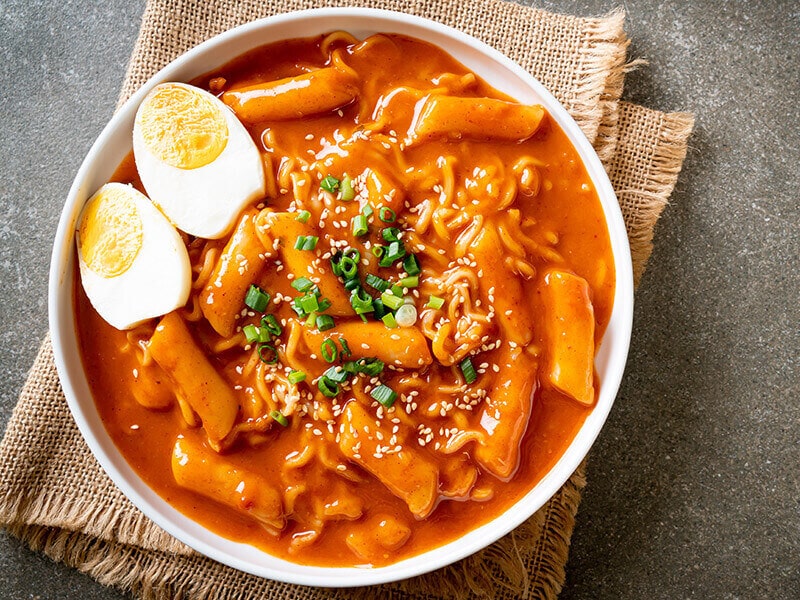
The preparation process is the first difference you need to know when comparing Korean and Japanese food. Koreans and Japanese will have different ways of marinating and handling raw components to create beautiful dishes.
When enjoying Korean dishes, their rich flavor will drag you. This comes from the habit of marinating meat and other raw food with spices, peppers, chili flakes, and sauces before cooking Koreans.
Meanwhile, Japanese people will prioritize simplicity in preparing and marinating. Most Japanese recipes use raw food with the least spice possible to ensure the authentic flavor of the dishes. And they will add the taste after the dish has been cooked.
Let’s try tasting rice cake to check the real flavor of this Korean food.
What Are The Differences In The Cooking Methods?
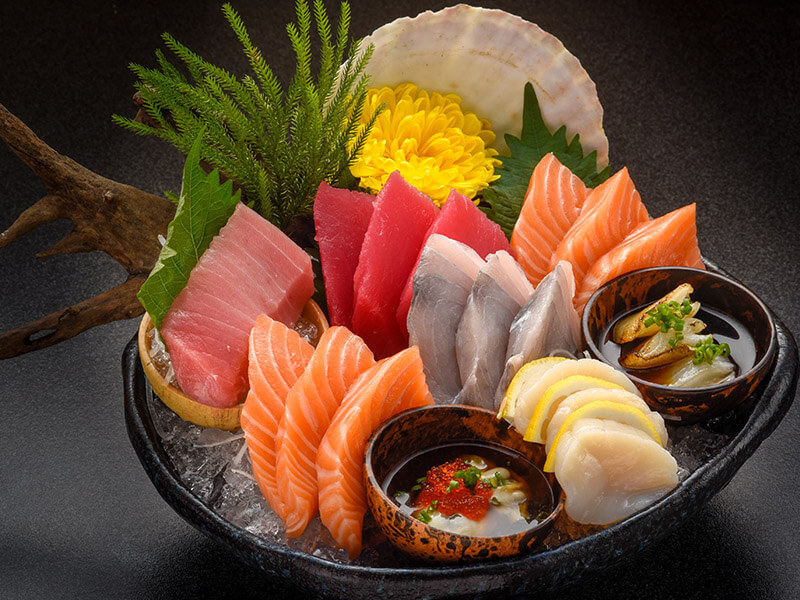
When researching Korean and Japanese food, I realized that cooking had many different points. Cooking Korean food seems much more intricate and complicated than cooking Japanese food, as you must prepare many condiments, spicy sauces, or pickled veggies.
Moreover, you have to spend more time in the kitchen to have delicious Korean food to enjoy with your family members even though you do not use expensive or unique ingredients. So, if you want to show cooking skills, let’s choose Korean food since it requires many techniques.
Koreans often pickle vegetables to make alluring foods, and Kimchi is a striking example. Moreover, stewing, grilling, pan-frying, and more are popular cooking methods of Korean cuisine.
Unlike Korean food, cooking excellent Japanese dishes will be more accessible and faster since you do not need to use too many auxiliary and high techniques.
It is simple; you just need to prepare, cut raw components and cook them in a frying pan or pot, but it is just for home cooking. Nonetheless, foods at high-class restaurants require meticulousness and care.
Besides using raw components, the Japanese often simmer (niru) ingredients to make tender foods. Also, steaming (musu) and frying (ageru) are other common ways to prepare excellent Japanese delicacies.
Also, making Japanese food will save you time because their simplicity helps cut down the cooking time significantly.
Let’s Compare Their Taste Right Now!
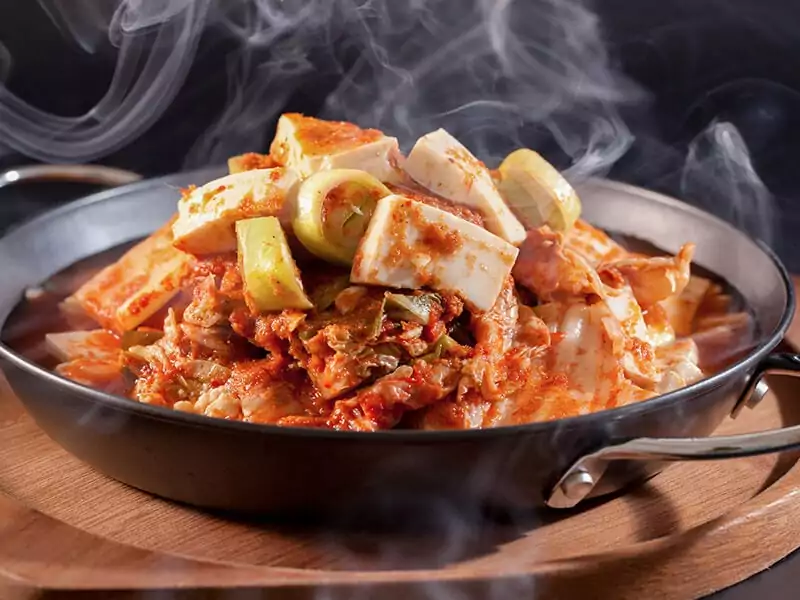
The flavor is a factor that helps you distinguish between Korean and Japanese food easier because they have many huge differences.
Suppose you have tried Korean food, you have fallen in love with its strong and rich taste. The blend of spices and sauces creates this intense taste. Soy sauce and oyster sauce are 2 pretty common elements in Korean dishes to give them an exquisite savory taste.
In contrast, Japanese food brings a sense of lightness and is more comfortable. The use of fewer spices makes the dish’s flavor subtle and delicate. Moreover, the aroma of the food is not too strong. Japanese food still retains the natural taste of the ingredients.
A clear difference in the taste between the 2 countries’ food is spicy. Spicy foods are icons and characteristics of Korean cuisine. Koreans use a lot of peppers during cooking, and they can adjust the spicy level by increasing or reducing chili content.
If you are not good at consuming spicy food, the dishes with typical red chili will not suit you. Nevertheless, you can choose Japanese food because Japanese people do not have the habit of adding much chili into food.
Take a trip to Japan to taste this nation’s abundant, delicious street foods.
Differences In Accompaniments
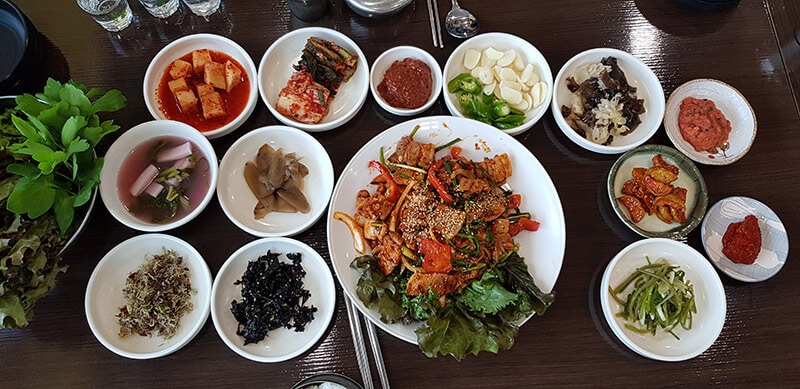
You may encounter countless side dishes on Korean dining tables. Typically, they often enjoy the main courses with soup, Kimchi, fermented food, and vegetable side dishes. However, Japanese people eat fewer accompaniments.
When mentioning the famous Japanese side dishes, I usually think of Okazu. This delicacy is made of veggie, meat, fish, or tofu. Normally, the Japanese enjoy this delectable dish with rice or noodles.
In Korea, the collection of dishes with rice is called Banchan. This list usually includes Tang (soup), Kimchi, Jjigae (stew), and Ganjang (soy sauce). Typically, Koreans will arrange Banchan at the center of the dining table.
What Is Healthier?
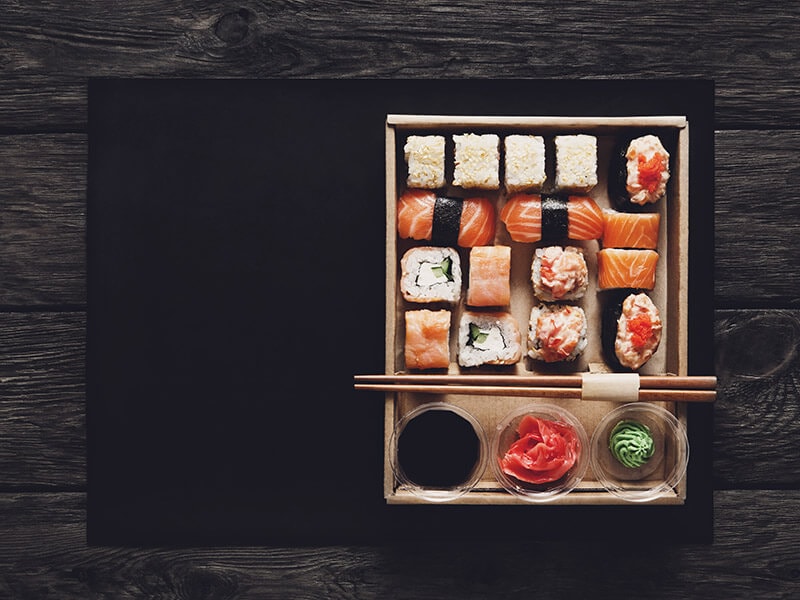
In terms of health, Japanese food will be better than Korean food. Korean dishes often contain more calories and sugar than Japanese food. Furthermore, using a lot of spices also adversely affects health.
Japanese dishes often retain the natural flavor of ingredients and contain low sugar. Not only that, you’ll come across meals with lots of veggies and little meat in the Japanese diet. Nevertheless, they will not consume 100 percent of the plants.
In addition, the habit of consuming spicy food of Koreans can have harmful effects on health. This is one of the reasons that lead to death because of respiratory diseases, stomach cancer, or ischemic heart disease (2).
Price And Quality Of Ingredients
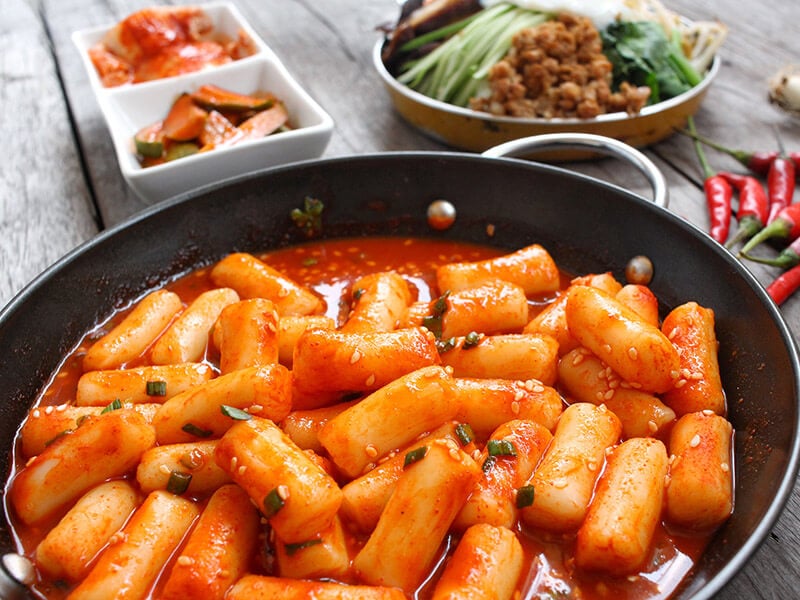
The quality of raw ingredients and price are the following features that also receive a lot of attention when comparing the food of 2 cuisines. Do you think Korean food or Japanese food will be more expensive?
A common point in the food of these 2 countries is that they use fresh components more than canned food. Nonetheless, when ordering Japanese food and Korean food on the same scale, Japanese dishes will have more premium ingredients.
Hence, you need to pay more money to enjoy a Japanese dish. Moreover, restaurants in Japan often have high requirements for the components they use.
Explore The Eating Etiquette In Japanese And Korean Cuisine
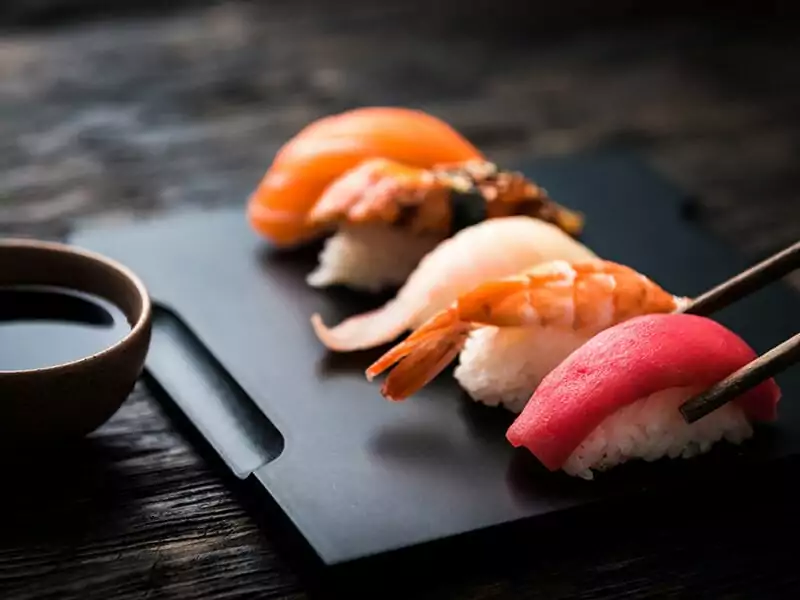
Koreans often pay attention to rules or rituals while enjoying food. And Japanese people also have various eating rituals, just like the Koreans. But the differences lay in the specific rules in each cuisine.
Japanese people often start with greeting chefs and staff before enjoying delicious dishes. The food needs to be cooked in a specific way according to the traditional recipe. Also, you must use chopsticks and ornaments carefully and accurately when eating with the Japanese.
Moreover, they always arrange the cutlery back to the original position after use. The Japanese focus on feeling history, art, and traditional consuming methods more than food flavor.
Not only that, the arrangement of dishes on the Korean and Japanese tables is different. Koreans often arrange dishes carefully in a strict process, but the Japanese seem more comfortable in this aspect.
Typically, before starting to enjoy delicious food in the meal, Japanese people often say “wish everyone enjoy a yummy meal” in the local language with the people at the table. Nevertheless, you’ll not see this custom in Korea.
Listen to 11 rules when you eat a meal in Korea right now.
The Similarities Between Korean Food And Japanese Food
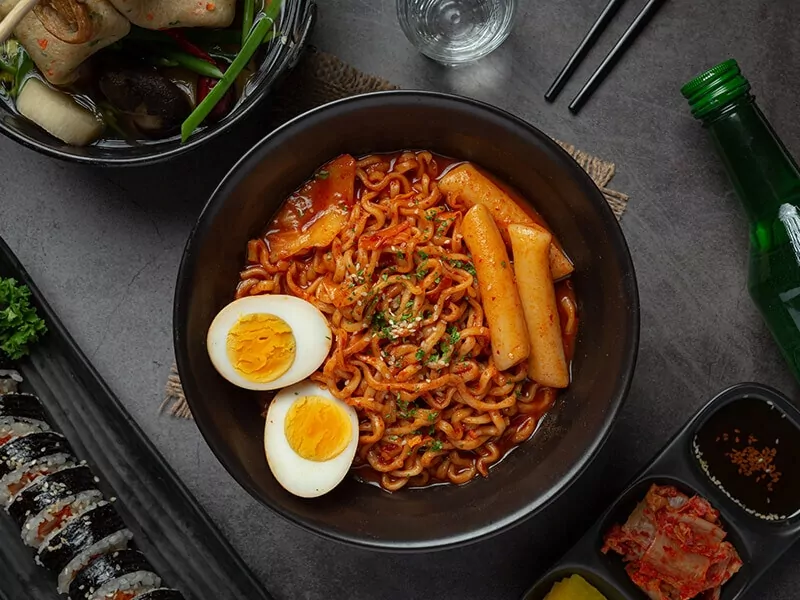
Aside from the differences, there are many similarities between Korean and Japanese food. It is time to blow your mind with the characteristic features they have in common.
Different from regular canned food like Western and American cuisine, 2 East Asian countries prioritize fresh components to bring the best experience for daily meals. People love to buy meat, veggies, and seafood from local markets and cook instantly.
Korean food and Japanese food are served in the same way. You will easily encounter a lot of bowls and plates on the dining table of people in these 2 countries because they often serve small portions.
A striking similarity between the food of the 2 countries is the regular use of rice, pickles, and soy sauce in daily meals. They are staple foods of these countries. People love making steamed rice and mixing it with savory main courses.
Furthermore, rice is an essential ingredient in processing Sushi, noodles, and Rice Rolls. People add soy sauce to the dishes to enhance their flavor. Not only that, it can act as a dipping sauce.
Koreans and Japanese have a huge passion for noodles. You can find many different sorts of noodles in the land of Kimchi, such as Bibim, Guksu, Naengmyeon, or Japchae. Ramen, Udon, or Soba are widely loved noodles in the country of cherry blossoms.
Both Korean food and Japanese food are famous in many regions worldwide. And, young people in other Asian countries have a great affection for the dishes of these 2 nations. Even better, their popularity also spread to Western countries.
Some Famous Korean Food And Japanese Food
In case you would like to bring new experiences to your guests, you can go to the kitchen to make excellent and famous foods of Japanese and Korean cuisine right now.
Iconic And Amazing Food Of Korean Cuisine
It is not difficult to find excellent and delectable food when you take a trip to Korea. You can learn the ways to make these foods to treat your loved ones immediately.
1. Gimbap – Korean Seaweed Rice Rolls
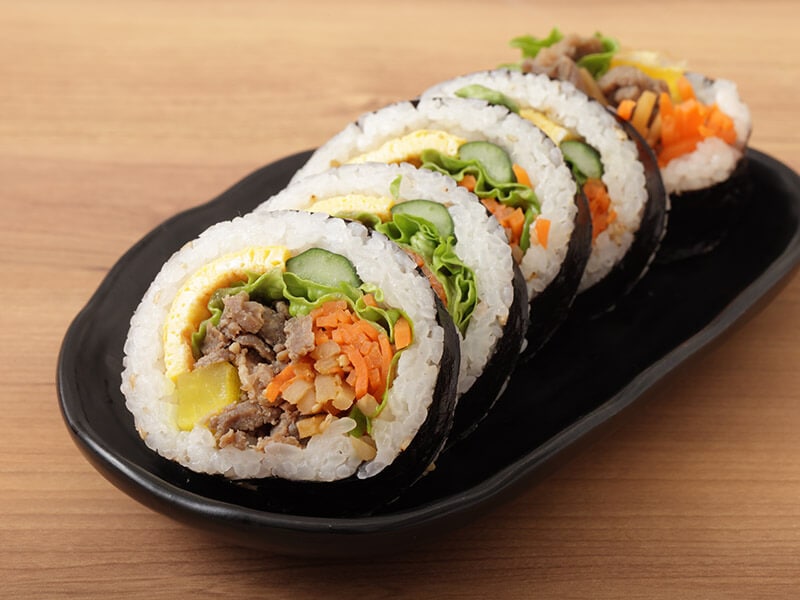
Gimbap is a well-known dish in Korean cuisine. This wonderful delicacy is the harmonious combination of steamed rice, fish, veggies, and meats. Koreans will roll these ingredients in a seaweed sheet. The natives cut it into small slices to serve.
You’ll be addicted to the flexibility of the rice and the crispness of veggies in this food. Many people think that this fantastic dish appeared in Korean from the Japanese colonial rules. Meanwhile, others argue that it was an invention of the Joseon era.
Check the right ways to make delicious Korean Gimbap.
2. Naengmyeon – Cold Noodles
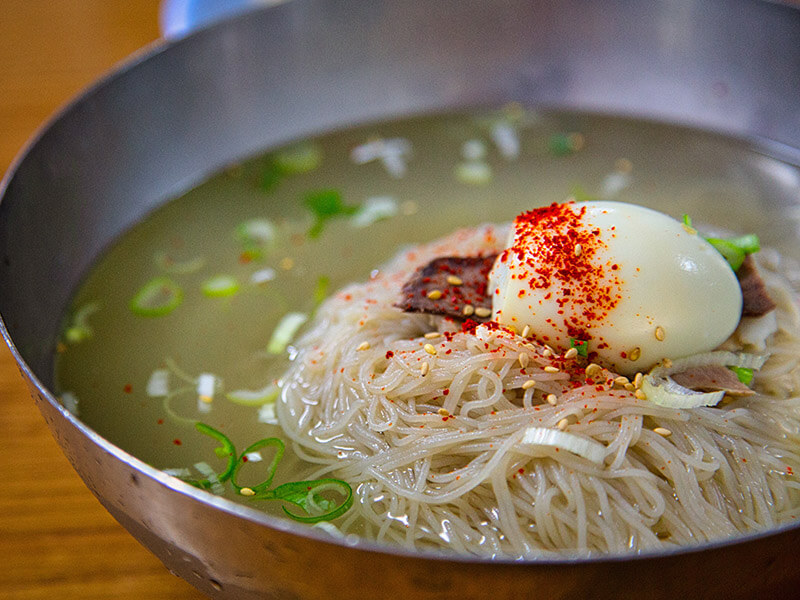
Naengmyeon is one of Korea’s best-selling dishes in the summer. These cold noodles will cool your body effectively. Flour, buckwheat, or potato starch are the key ingredients of this food. The long and chewy noodles will make you fall in love.
This dish originated in North Korea and gradually spread throughout the Korean peninsula after the Korean War. Koreans often serve these noodles in a stainless-steel bowl with cucumbers, ice broth, pear slices, and boiled eggs.
3. Kimchi Jjigae – Kimchi Stew
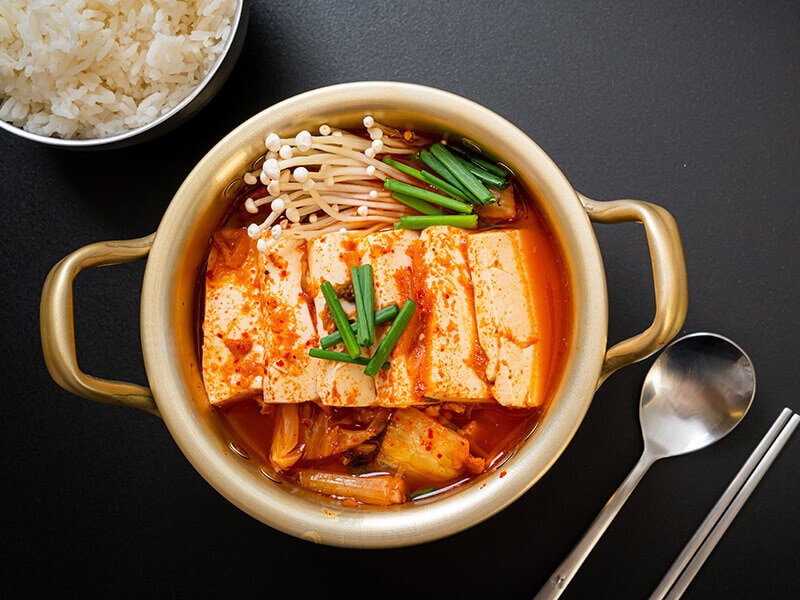
Kimchi Jjigae, or Kimchi stew, is an indispensable dish in Korean meals. The combination of Kimchi, pork, tofu, seafood, and veggies has brought a delightful and delicious dish. Its rich and spicy flavor will be suitable for cool or cold days.
This delicacy has different variants with newly added ingredients. Chamchi Kimchi Jjigae is a version with tuna as the main ingredient. In addition, you can try Budae Jjigae (Kimchi stew with hot dogs, cheese, and Spam) or Ggongchi Kimchi Jjigae (containing Pacific saury) to change the taste.
Go to the kitchen to make yummy Budae Jjigae treat your family members.
4. Bulgogi – Korean Barbecued Beef
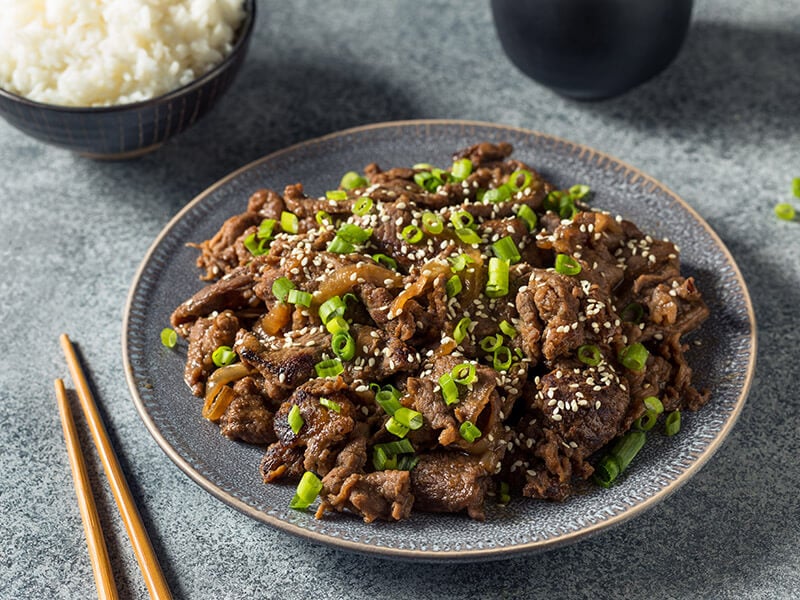
It is a pity if you do not enjoy Bulgogi when you arrive in Korea. This excellent grilled food is the product of taking advantage of marinated slices of beef. Koreans often grill meat on a stove-top griddle and enjoy it with vegetables.
Bulgogi existed in the Goguryeo era. Typically, Korean people marinate beef with sugar, soy sauce, sesame oil, and spices to soften the meat and enhance the flavor of delicious food. And each person’s marinate will vary depending on preferences.
Most Popular Japanese Food You Have To Try
In order to diversify your menu, it is necessary to consult the food in this section to bring the breeze of Japan to your house. Please save them to your cookbook instantly.
1. Udon
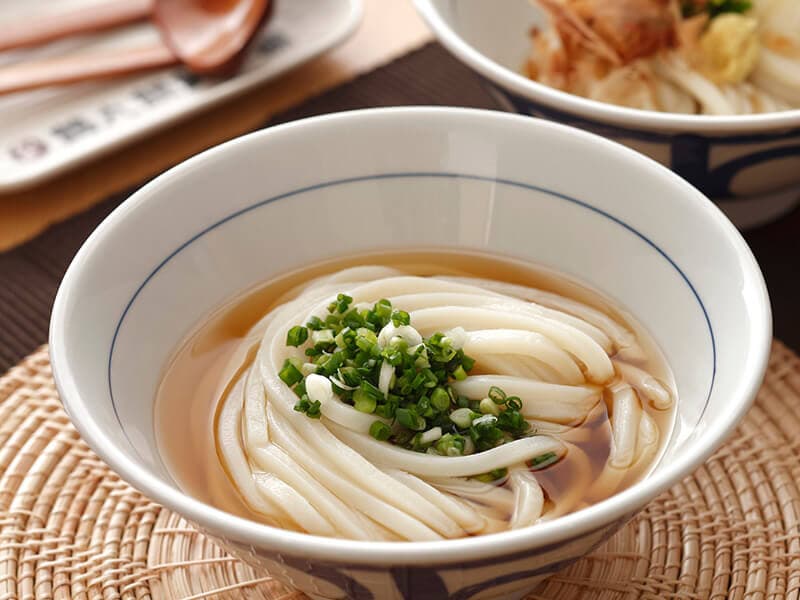
I always enjoy a bowl of Udon noodles when traveling in Japan. These thick and soft noodles are the product of wheat flour. You will fall in love with the gentle and delicate taste of broth made up of soy sauce, Mirin (rice wine), and Dashi.
Also, it will be better with the addition of prawn Tempura or sliced fish cake. There are many ways to serve this delicious food. The Japanese often serve this delicacy cool on summer days and hot on the winter days.
Explore all essential things about Japanese Udon right now.
2. Sashimi
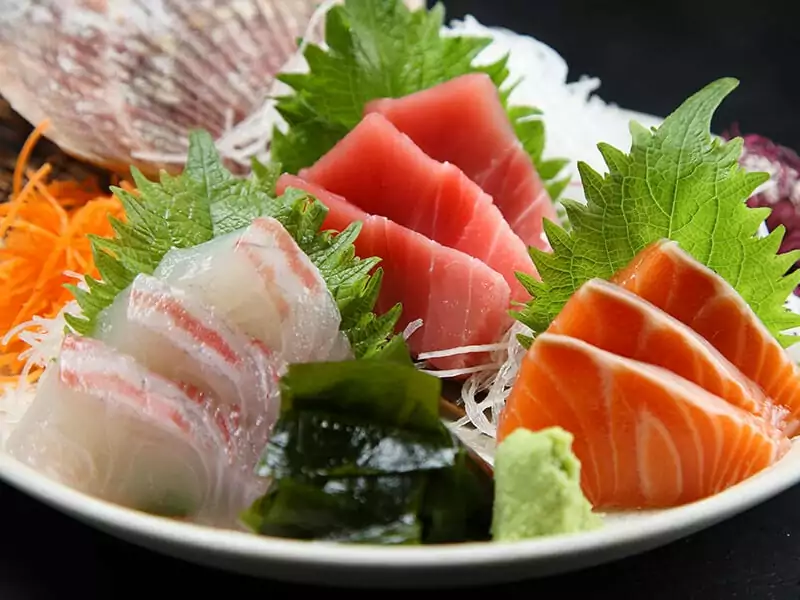
If you are a big fan of raw meat or fish, Sashimi is the worth-trying choice. The tenderness and fresh taste of meat and fish will give a pleasant mouthfeel. To enhance the flavor of raw ingredients, I often eat them with soy sauce.
Apart from dipping sauce, you can consume fresh meat and seafood with fresh ginger, Wasabi, or garlic. In terms of appearance, the Sashimi plate looks more beautiful when garnished with Daikon or white radish.
3. Ramen
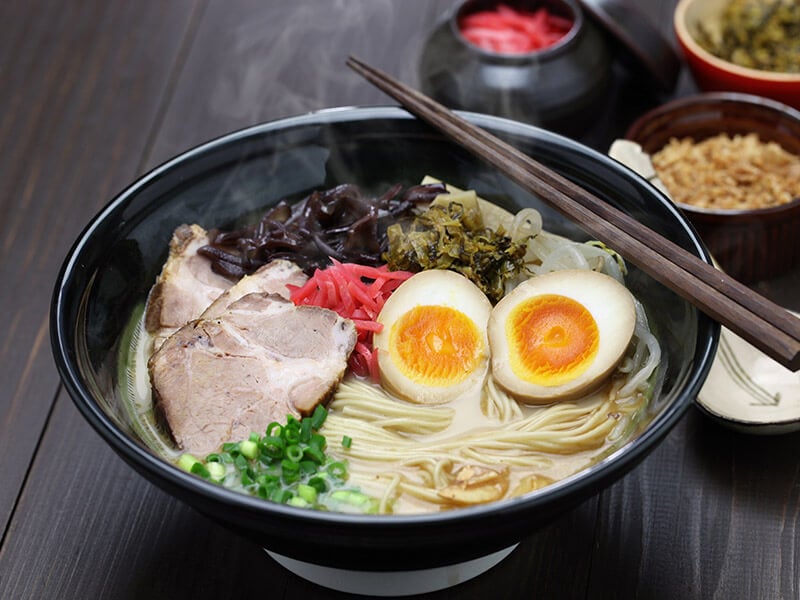
Ramen is one of the iconic foods of the Japanese. This food is a well-combined fusion of Chinese-style wheat noodles and broth. The rich and alluring flavor of meat-based broth will fascinate you in no time.
Moreover, when giving this dish a shot, you can feel the hint of Miso or soy sauce. Also, the Japanese add sliced pork, scallions, and dried seaweed to enhance the quality of this excellent dish.
Blow your mind with the history of fantastic Ramen immediately.
4. Oden
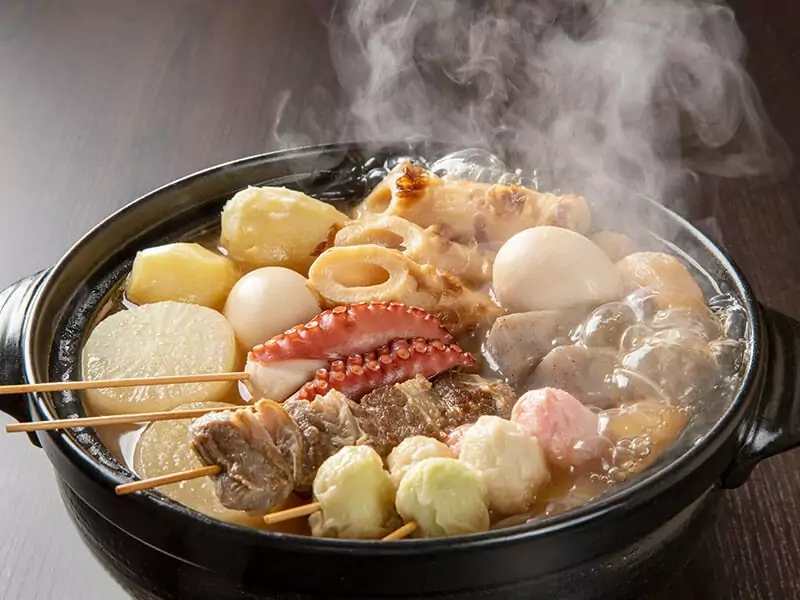
Most Japanese people are familiar with Oden. It is a type of Japanese one-pot recipe. To get a perfect Oden bowl, you must prepare boiled egg, konjac, Daikon, fishcake, and Dashi broth. Initially, Oden is a dish with cooked tofu in Miso.
Today, people often combine it with Dashi, and this combination has become closer for many people. When you come to Japan, you can enjoy Oden at food carts or convenience stores. Also, its price will be good for your wallet.
FAQs
I have received many exciting questions about the differences and similarities between Japanese and Koren foods. It’s time to check the answer to expand your knowledge.
Which Is Better?
Which country’s food do you like more? You should remember that each country has its unique culture and cuisine, so it is not difficult to find the differences. There are still differences between Japanese and Korean cuisine.
I hope you will no longer be confused about the foods of these countries. Besides, I am looking forward to receiving other comparison ideas and your feedback in the comment part. Let’s share this post, and thanks for your sharing!
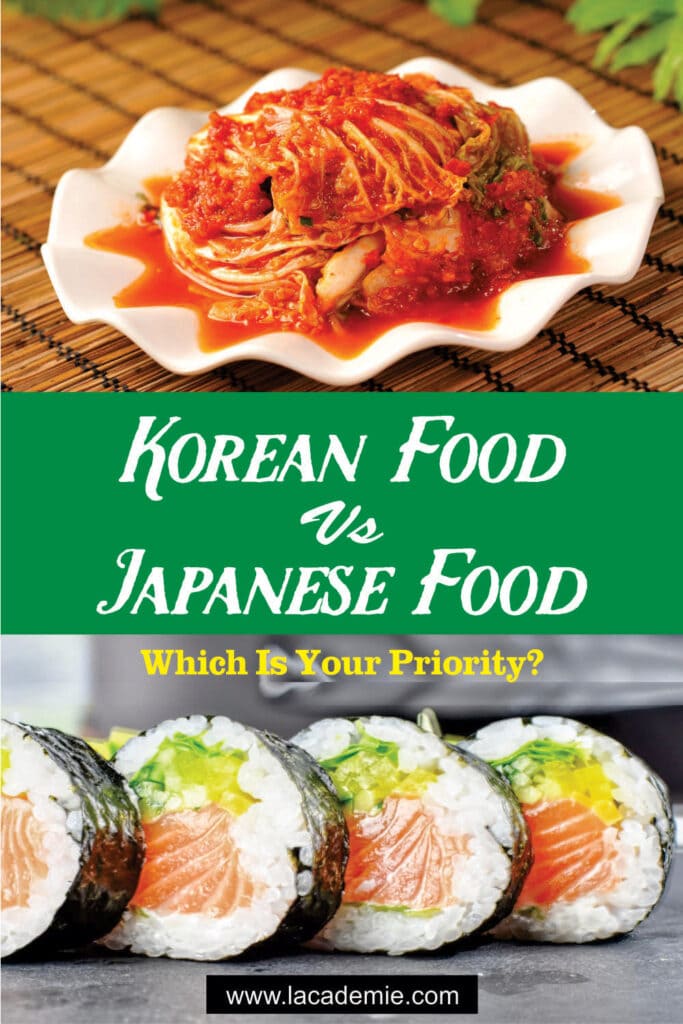
References
- Japanese cuisine. (n.d.). Wikipedia. Retrieved June 13, 2022, from https://en.wikipedia.org/wiki/Japanese_cuisine
- Consumption of spicy foods and total and cause specific mortality: population based cohort study.

Jamie Scott
Editor in Chief, Senior Content Writer
Expertise
Home Cooking, Meal Planning, Recipe Development, Baking and Pastry, Food Editor, Cooking-video Maker, Western Food Evaluation Expert
Education
Le Cordon Bleu College of Culinary Arts
Local Community College, New York, NY
Jamie Scott is a skilled culinary expert and content creator specializing in Western cuisine. With over 15 years in the culinary field and formal training from Le Cordon Bleu, Paris, Jamie deeply understands how to blend nutrition with delicious flavors. His passion for cooking matches his commitment to making healthy eating accessible and enjoyable.
On Fifteen.net, Jamie brings a fresh perspective to classic dishes and beverages, offering readers insightful recipes, cooking tips, and a fresh view on meal planning that emphasizes taste, health, and simplicity.